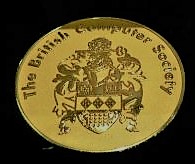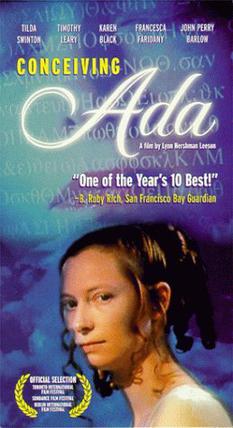
Augusta Ada King, Countess of Lovelace was an English mathematician and writer, chiefly known for her work on Charles Babbage's proposed mechanical general-purpose computer, the Analytical Engine. She was the first to recognise that the machine had applications beyond pure calculation.

The analytical engine was a proposed mechanical general-purpose computer designed by English mathematician and computer pioneer Charles Babbage. It was first described in 1837 as the successor to Babbage's difference engine, which was a design for a simpler mechanical calculator.

Computer science is the study of computation, information, and automation. Computer science spans theoretical disciplines to applied disciplines. Though more often considered an academic discipline, computer science is closely related to computer programming.

Charles Babbage was an English polymath. A mathematician, philosopher, inventor and mechanical engineer, Babbage originated the concept of a digital programmable computer.

A difference engine is an automatic mechanical calculator designed to tabulate polynomial functions. It was designed in the 1820s, and was first created by Charles Babbage. The name difference engine is derived from the method of divided differences, a way to interpolate or tabulate functions by using a small set of polynomial co-efficients. Some of the most common mathematical functions used in engineering, science and navigation, are built from logarithmic and trigonometric functions, which can be approximated by polynomials, so a difference engine can compute many useful tables.

The Jacquard machine is a device fitted to a loom that simplifies the process of manufacturing textiles with such complex patterns as brocade, damask and matelassé. The resulting ensemble of the loom and Jacquard machine is then called a Jacquard loom. The machine was patented by Joseph Marie Jacquard in 1804, based on earlier inventions by the Frenchmen Basile Bouchon (1725), Jean Baptiste Falcon (1728), and Jacques Vaucanson (1740). The machine was controlled by a "chain of cards"; a number of punched cards laced together into a continuous sequence. Multiple rows of holes were punched on each card, with one complete card corresponding to one row of the design.

A computer programmer, sometimes referred to as a software developer, a software engineer, a programmer or a coder, is a person who creates computer programs.

This article presents a detailed timeline of events in the history of computing software and hardware: from prehistory until 1949. For narratives explaining the overall developments, see History of computing.

Joseph Marie CharlesditJacquard was a French weaver and merchant. He played an important role in the development of the earliest programmable loom, which in turn played an important role in the development of other programmable machines, such as an early version of digital compiler used by IBM to develop the modern day computer.

The Lovelace Medal was established by the British Computer Society in 1998, and is presented to individuals who have made outstanding contributions to the understanding or advancement of computing. It is the top award in computing in the UK. Awardees deliver the Lovelace Lecture.

The history of computer science began long before the modern discipline of computer science, usually appearing in forms like mathematics or physics. Developments in previous centuries alluded to the discipline that we now know as computer science. This progression, from mechanical inventions and mathematical theories towards modern computer concepts and machines, led to the development of a major academic field, massive technological advancement across the Western world, and the basis of a massive worldwide trade and culture.

Conceiving Ada is a 1997 film produced, written, and directed by Lynn Hershman Leeson. Henry S. Rosenthal was co-producer of the film. The cinematography was by Hiro Narita and Bill Zarchy.

A computer is a machine that can be programmed to carry out sequences of arithmetic or logical operations (computation) automatically. Modern digital electronic computers can perform generic sets of operations known as programs. These programs enable computers to perform a wide range of tasks. A computer system is a nominally complete computer that includes the hardware, operating system, and peripheral equipment needed and used for full operation. This term may also refer to a group of computers that are linked and function together, such as a computer network or computer cluster.

Doron Swade MBE, born 1944, is a museum curator and author, specialising in the history of computing. He is especially known for his work on the computer pioneer Charles Babbage and his Difference Engine.

Melina Sydney Padua is a graphic artist and animator based in the United Kingdom. She is the author of The Thrilling Adventures of Lovelace and Babbage steampunk comic, and her animation work appears in several popular Hollywood films.
This is a list of publications by English author James Essinger. For information about the author see main article James Essinger.

The Innovators: How a Group of Hackers, Geniuses, and Geeks Created the Digital Revolution is an overview of the history of computer science and the Digital Revolution. It was written by Walter Isaacson, and published in 2014 by Simon & Schuster.

The Thrilling Adventures of Lovelace and Babbage: The (Mostly) True Story of the First Computer is a steampunk graphic novel written and drawn by Sydney Padua. It features Ada Lovelace and Charles Babbage in an alternative universe where they have successfully built an Analytical Engine and use it to "fight crime".

Note G was a computer algorithm written by Ada Lovelace, and was designed to calculate Bernoulli numbers using the hypothetical analytical engine. Note G is generally agreed to be the first algorithm specifically for a computer, and Lovelace is considered as the first computer programmer as a result. The algorithm was the last note in a series labelled A to G, which she employed as visual aids to accompany her English translation of Luigi Menabrea's 1842 French transcription of Charles Babbage's lecture on the analytical engine at the University of Turin, "Notions sur la machine analytique de Charles Babbage". Lovelace's Note G was never tested, as the engine was never built. Her notes, along with her translation, were published in 1843.

Antonietta Grassi is a contemporary Canadian artist based in Montreal, Quebec. She is known for her geometric abstract paintings which reference textiles, architecture, analog technologies and the history of 20th century painting. Her work has been featured in solo and group exhibitions in museums and galleries in Canada, the United States, and in Europe


















